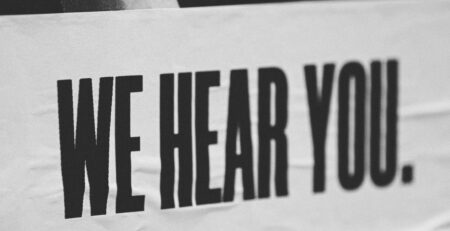How Creatives Fit Into Your Investment Pitch Deck
Investment pitches are what help startups become billion-dollar companies. Creative employees like UX designers, product designers, marketing specialists, and copywriters are an essential part of the company, so they should also be a cornerstone of your pitch deck.
You have to understand what investors are looking for if you want to be successful. They’re looking for an alluring opportunity that they can play a pivotal role in creating or expanding – in short, they’re looking for a story.
Creatives are well-versed in storytelling. Not only should you use them to help craft your pitch deck, but you should also give them a standout role within the deck itself. Find out how you can do just that in this guide to creatives and investment pitch decks.
What Is An Investment Pitch Deck?
A pitch deck is a consolidated presentation of all the reasons your company is a smart investment. Not only does a short (usually PowerPoint) presentation help organize your ideas, it streamlines the pitch so investors don’t have to sit through long speeches.
With the imperatives listed in the pitch deck, investors are introduced directly to the heart of the project. Construct it correctly and they’ll see your vision for the future unfold before them in a way that makes the investment feel like a logical and exciting move.
Company founding typically happens in stages or rounds. Pre-seed and seed funding happen early on in a company life cycle. For some businesses, these are the only stages they reach.
For the rest who need more funds to grow and thrive, the following investment stages are divided into series A, B, and C. Investment pitch decks are usually used during Series A investments when the user base is still pretty small.
Later on, Series B and C will build on the performance of the company up to that point. Investors from earlier series may stick around and put more money into the project and additional funding sources usually also appear after Series A is completed.
The players in Series A (and Series B in most cases) are large investment firms. Recent years have seen crowdfunding become a dependable source of early funding for many companies as well. In either case, a concise investment pitch deck appeals to potential investors the most.

Common Elements Of An Investment Pitch Deck
Here’s what you can expect to find in a typical Series A investment pitch deck and how you can highlight the company’s creative talent with them:
- The Value Proposition
Nothing is more important than a well-worded, short statement that highlights the soul of your project for investors. It should be easy to understand right away so that it influences the impact of the rest of the pitch deck.
A great example of a value proposition is the one LinkedIn used during its B Series investor talks in 2004. “Professional People Search 2.0” gets to the point and incorporates LinkedIn’s improvements on the old ways available for professionals to connect with one another.
Figuring out the value proposition is important for establishing the organization’s mission statement. Your creative staff should form part of that core business even if you aren’t directly producing creative products like media or apps.
Fortunately, including creative talent in the value proposition is simple enough if you fully understand the value they bring to the organization. Any kind of product or service your company plans to render to its customers will benefit from user-centric design thinking.
A brief mention of your creative team (or just crediting them with the nice-looking pitch deck you’re using) will show the kind of care the company has for its products.
- Opportunity & Market Fit
Investors definitely want to know the possible and likely number of people your product is likely to reach. Companies that are really disruptive and novel have market fit and opportunity figured out because they’re offering services that no one else is offering.
When AirBnB launched as AirBed&Breakfast, they were the first platform and happy to highlight that fact in their pitch deck. What you’re aiming for here is identifying a specific and unoccupied role that your company can step into.
You need to find out if the problem you’re solving is really a big deal at all for a significant enough number of people to form a market and support the business. The drive to digitize things and migrate services online as part of the “Internet of Things” has created a huge need for the types of products and services creatives make.
That means having creatives involved is or soon will be a good indication that your company has the product/market fit required for the business to run a profit. Of course, it’s not a guarantee on its own, but it is a case your pitch deck can make.
- The Problem You’re Addressing
Not only should you tell prospective investors about the problem you want to solve, but you should also explain how you know it’s a problem and how you know people will use your product to solve that problem.
User research is done by creatives in UX and related fields. You can use that kind of research in your pitch deck to show what the actual users of your product will be. It’s a huge asset.
Of course, keep your stats to a minimum so as not to overwhelm the pitch with too much information and drown out the most important parts. Using such research shows you’ve done due diligence and it will still be novel to investors who are most likely to respond to Series A investment pitches because they’ve seen so many before.
- Your Product Or Service
Now is the time to wow potential investors with the ease and adroitness of your product. It’s central to your entire pitch, the raison d’être of the company, and a fantastic time to include some of the sketches, wireframes, and other deliverables that your creatives have been hard at work preparing.
Trace the work of the creatives who are responsible for gathering user data and solving pain points with clever design thinking and you have a ready-made narrative for your investment pitch deck. The story writes itself – and even better, it comes across as more authentic and personal because it is.
- Traction
The term traction describes how well your company is finding its footing. In other words, it’s a measurement of people’s response to what the business does. You want to show this off to current and prospective investors throughout the process.
While you’ll have more information about traction in Series B and C, many companies have some early on to use in the A Series pitch. When Wise was still TransferWise, they had a traction slide in their pitch deck that used metrics such as a 70% volume from repeat customers, total uses in GBP, and their zero-pound marketing expenditures, among other figures.
Creatives might not be the ones with tons of information about your marketing budgets, but they will be gathering user data that can give your pitch deck even more detail. You can mention interactions and conversions to show how well your product works and how much people desire it.
- Your Team
Brief bios of the standout members of the team will give a human face to your org and give you space to give credit where it’s due. Creatives are always aiming to take the most novel approach to problem-solving, making them natural inclusions in this section of your pitch deck.
If you have space in your pitch deck for experience, you can use your team’s bonafides to show that talent and skill are on your side. If they’ve already had experience on other projects, it will help investors feel confident that they’ll be successful again.
- Revenue
Where is the money coming from? Subscriptions, fees, or outright purchases?
It might not seem like creatives will have much to do with this part of your pitch, but in some cases, they will. For instance, if your model relies on conversions then information about user research and responses to certain CTAs (or the lack of need for them) will help add an accent to the revenue model portion of your investment pitch deck.
- Competition
Coming up with a product or service that’s so disruptive it doesn’t have any competition is pretty much impossible at this point. The internet has attracted bright minds from all over the world so you’re much more likely to have competing firms trying to solve the same problems you are.
Creatives are always keeping an eye on the competition to make sure they’re not repeating work that’s already been done. Plus, they generally have plenty of experience selling their ideas, which means they’re well prepared to explain how your approach will or does differ from what the competition is doing.
- Marketing
Highlight successes you’ve had in your communication efforts to reinforce the other areas of your pitch deck that investors spend tons of time on like traction and competition.
Since creatives are the ones in charge of designing and implementing these marketing campaigns, they should have plenty of insight into the pitch deck. If marketing hasn’t begun yet, creatives can describe their vision for advertising strategies and why they’re sure to work based on user research.
If you show you can get the attention of the public, you’ll have the attention of your potential investors. It’s critical to have a well-rounded marketing approach and including it in your pitch deck will also help you fix your marketing strategy if it needs a bit of retooling.
- Financials
Important financials including income, cash flow, and expenditures are going to take up most of the time you spend on your pitch deck. While they respond best to storytelling approaches, investors need to see in black and white that you’re in a good position presently and that their money will be in good hands if they do decide to invest.
Projections are particularly important here. The outlook should be detailed even if it isn’t highly technical. Don’t get into the nitty-gritty, but give them every possible indication that their investment will work and grow.
Creatives might not have a big part to play for this slide, but they can help keep costs down behind the scenes. Design a product the right way and many cash flow and financial headaches can be resolved.
Investors Are Users Too
You won’t always be giving a live presentation along with your investment pitch deck. In that sense, creatives can help you develop the presentation in such a way that potential investors will be enthralled with the information inside it and come away with a better impression overall.
User research on the investors themselves might not be feasible, but you can certainly classify a successful investment as a positive reaction. Other people who have made significant investments in the past can also be used to supplement existing research on what makes pitches work.
In the new internet era, it’s likely your pitch deck will be available for perusal without the live team there. Apps and communication tools have made it easier than ever to get that kind of information in circulation, which is great for business from a numbers game perspective.
But you’re still presenting the pitch deck even when you’re not standing up next to the screen and giving a speech. That’s why getting creatives on board early with this critical fundraising tool is so important. They can treat prospective investors like users who are using your pitch deck the same way they would any other kind of design product.
After all, they have pain points like users do. They have money they want to see grow and they need an outlet for it. That means they need information and they need it quickly, thoroughly, and without interruption. Design a user-friendly presentation and you’re much more likely to get the investments you need.
What If We Haven’t Started Work Yet?
To be fair, most of the tips above for including creatives in the investment pitch deck are geared toward companies that have done at least a bit of work already. If you’re still in the entirely theoretical phases, there are still plenty of ways creatives can help make a killer pitch deck.
That user research can still be done with very few resources. Existing literature and other user information are widely accessible if you know where to look for it, so creatives can help give you concrete information – something most failed pitch decks are woefully short on.
Plus, creatives bring storytelling to the table. Their whole modus operandi is crafting enjoyable experiences in the digital realm. Bring them in early to help give that kind of experience to your investors.
Don’t leave it to the big companies to put UX and design thinking to work. Even small startups can put these problem-solving frameworks to good use. In fact, with the smaller initial size, creative approaches are likely to have an outsized impact. They could totally revolutionize your company’s image at a time when it is needed most.
Finally, getting creatives in early on will help establish a narrative that will continue through later investment series. It’s a metric for success so you can give updates during Series B and C rather than selling people on the whole idea all over again.
If you want to manage expectations and bring investors to that point of mutual benefit, creatives are an essential part of your pitch deck. Get them involved earlier than you think. You’ll be grateful for it later.

Conclusion:
Whether you’re trying to snag an angel investor or circulating your pitch deck to as many investors as possible, incorporating creatives into its design and layout is integral. It’s far more likely to bring money in during Series A when your company needs it most and you’ll be in a far better position to continue fundraising with a cohesive, continuous approach when needed.
Gaining investors is absolutely critical for the majority of businesses no matter what size they are. That means investors are seeing tons of them. Companies who want their ideas to stand out need to get people who know how to present these ideas in a way that thrills the viewer – that’s in the job description for creatives.











